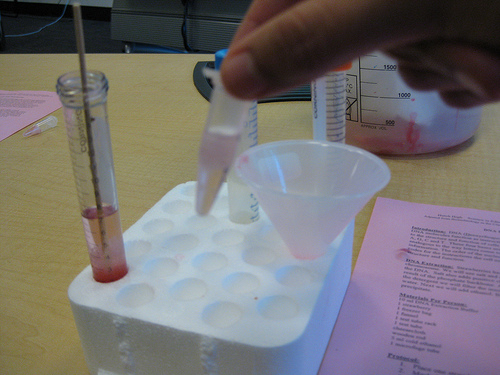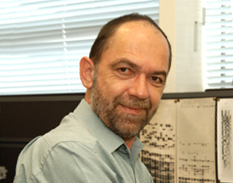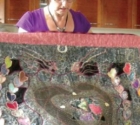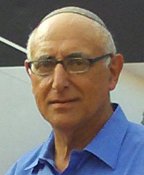
DNA Tray. Courtesy of NBABR, flickr.com
The origins of my professional life in London can be traced to the 1960s and an episode involving a secret agent in the British Intelligence Service, a spy called George Blake. He was born George Behar in Rotterdam to a Dutch mother and a Turkish/Jewish father. As a teenager he came to London. He was a British subject as a result of his father having served in the British army.
He was a very smart guy and a talented linguist. He helped the British intercept and translate many communications from the Germans, Russians and others. He travelled the world in the course of his work and mixed with other agents from both ‘sides’. After a while he became more enamored with the politics of the other side than he was with the British and, unknown to the British, he became a double agent. He was a double agent for twelve years, supposedly working for Britain but actually working for the Russians, and in so doing, he greatly undermined British Intelligence. While working for the Russians he caused the almost complete collapse of the British Intelligence spy network. He was eventually found out and was ultimately brought to justice in 1961 when the English courts tried and convicted George Blake for spying and offences under the Official Secrets Act. He was sentenced to 42 years in prison - the longest ever recorded prison sentence in modern times. He was incarcerated in Wormwood Scrubs, the largest prison in Europe.
While all this was going on I was at university studying for my BSc in Physics and PhD in Biophysics. So, what has Blake got to do with me? Well, in 1966, five years into his 42 year sentence, George Blake escaped from Wormwood Scrubs prison. He evaded recapture; fooled port security; and ultimately disappeared to Moscow where he spent the rest of his life comfortably living in the society of his choice.
British Parliament was asked: How could someone – especially a spy who had done so much damage to Britain and had been convicted of crimes against the State and had been given such a long sentence - escape from a British prison, especially from Wormwood Scrubs? When questions like this are asked in Parliament there have to be meaningful and convincing answers. The result was that the Home Secretary, Roy Jenkins, asked Lord Louis Mountbatten, a great grandson of Queen Victoria, to investigate and report on the whole subject of “Escapes and Security in British Prisons”. Among Mountbatten’s recommendations was that Britain’s top scientists should be recruited to apply modern technology to improving security in prisons. I applied among others, was taken on and spent ten years working in this field of research and development.
The most useful time I spent during this period was when I took a sabbatical year out of work at university and ended up with another degree – this time a Masters in Systems Engineering. Systems Engineering is to do with planning, organizing and monitoring systems of all kinds. For example: oil refineries, dispatching systems, office systems, medical treatment regimes, traffic systems, taxation systems and, I thought, prison systems. I used the methods I had learned to try to understand in greater depth how a prison is managed and thus to try to reduce the number of escapes. Well, as soon as certain people got news of my crazy ideas you can image how they reacted. They took fright and transferred me out of the Prison Department into the Police Department! It was, actually, about the right time for a change in my career direction.
The Police Department work was much more varied than the prison work and I eventually headed the evaluation section of what was a very large police research program. The program included computerized fingerprint storage, retrieval, comparison and analysis; automatic image and facial recognition; satellite tracking of vehicles; recorded audio and video image enhancement; firearms research; riot equipment development; computerized information databases; social science and psychological research; forensic science research; vehicle speed trap development; automatic license plate readers (both of these are used on Israel’s roads today) and DNA fingerprinting.

Professor Sir Alec Jeffreys-Courtesy of Wikipedia
It’s this last topic that I want to discuss. In the mid-1980s, Alec Jeffreys, a geneticist at Leicester University (now Professor Sir Alec Jeffreys) developed a method of unique personal identification which came to be known as DNA fingerprinting. The development and extension of this work into a tool useful for criminal investigation was funded from our research program.
Before we look at the use of DNA fingerprinting in crime detection we must look at DNA itself. DNA is unique to an individual – like a person’s fingerprint. A person’s DNA is the same in every one of the cells in his body but different from everyone else’s. Also, there are strong similarities between the DNA of members of the same family and in fact, identical twins have identical DNA.
Before we discuss the process of DNA fingerprinting we have to focus on the subject of digestion. When we eat food, the food is digested, it is broken down into smaller and smaller components – very small components, even down to molecules. This broken down food is then used by our bodies for various purposes to build muscle and tissue and to give us energy. It is the enzymes in our mouth, stomach and guts that do this digesting. Similar types of enzymes are used in the laboratory in the DNA fingerprinting process.
Put simply, DNA is like a very long open necklace of many millions of colored beads; actually, billions of colored beads. The colors can be in any order along the length of the necklace and the order of these colored beads is unique to an individual and determines the individual’s characteristics. There can therefore be many billions of different combinations of patterns possible along the necklace and hence there can be billions of different-looking people all with different characteristics.
At different points along the necklace there can be certain recognizable patterns or groups of beads. These patterns can occur more or less frequently along the necklace according to an individual’s DNA. Let’s call this special group of beads the “target group” of beads. Exactly where these target groups occur along the necklace is unique to an individual. Because the locations of the target groups are unique to an individual they can be used to match two samples of DNA.
In the laboratory, the DNA sample is mixed with a special enzyme which homes in on the target groups and digests them. In other words, the enzyme digests particular bits of the DNA and leaves the rest undigested. What results is broken up bits of DNA – broken up only at the special points I mentioned – the target groups. With the exception of the case of identical twins where two different people’s DNA will indeed match, the pattern of different lengths of broken up DNA which results from this digestion process is unique to a single person. What follows is an account of the first ever use of DNA fingerprinting in a crime investigation.
In 1983 in Leicestershire, a 15-year old girl, Lynda Mann, was raped and murdered. After a long investigation the case was not solved. This remained so until three years later when another 15- year old was raped and murdered in a similar way. In the course of this investigation the prime suspect, Richard Buckland, was questioned and he admitted knowledge of the second murder but denied any knowledge of the first.
Professor Alec Jeffreys offered to analyze the DNA of the evidence found on the two victims together with the DNA in the blood of the suspect. The result was unexpected. The samples from the two girls matched each other – that is the same rapist was responsible for the two attacks - but there was no match between these samples and Richard Buckland’s DNA. Buckland was innocent – at least, innocent of rape. It was said at the time that without this DNA evidence Buckland would almost certainly have been wrongly convicted of rape.
The Leicestershire police did not drop the cases. They set up a project to carry out a mass screening of the blood of 5000 males living in the neighborhood of the crime scenes and the homes of the girls. This took six months to complete. The result was no positive matches. They had still not found the rapist. Some time later the police got a lucky break. In mid - 1987, in a pub, an Ian Kelly was heard to brag that he had earned £200 for doing virtually nothing. He was overheard saying that a Colin Pitchfork had paid him £200 to pose as Pitchfork when the 5000 samples were taken by the police. He had given his blood in place of Pitchfork’s. Very soon after this Pitchfork was arrested and tested; and things moved quickly to a trial, conviction and a 30 year prison sentence.
Today DNA fingerprinting is commonplace, cutting-edge technology and also a regular high school biology curriculum topic. By contrast, my active scientific career in criminal justice research has now come to an end but you can see how its origins are rooted in the daring and audacious prison escape of a British secret agent back in the 1960s.
Dr. Hershell Goldman, originally from the UK, has degrees by London University in Physics (BSc) and Biophysics (PhD) and by City University, London in Systems Engineering (MSc). His passion was optical instrument design and this led to his working for the British Home Office in the research departments of the Prison and Police services. Today he is a volunteer at the Weizmann Institute.
 Israel: Reclaiming the Narrative - A Review
Israel: Reclaiming the Narrative - A Review ESRA Outing to Aida at Masada
ESRA Outing to Aida at Masada  Coffee Group for Immigrants enters 5th year
Coffee Group for Immigrants enters 5th year (302x450)-1451381711.jpg) Odeon Oscar
Odeon Oscar The Jewish Connection
The Jewish Connection ellis island
ellis island Hershell Goldman
Hershell Goldman